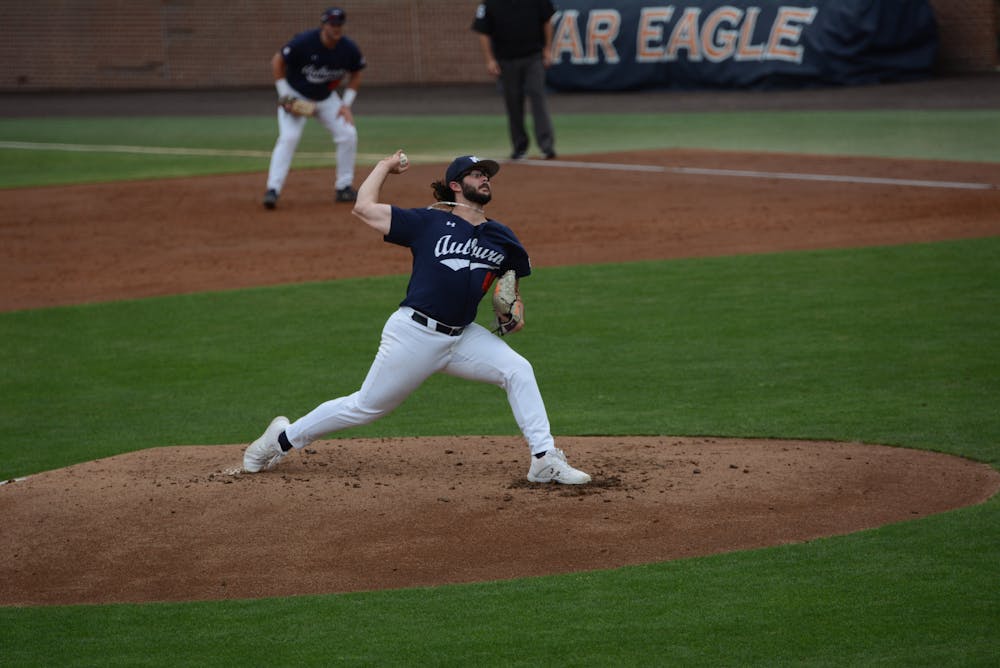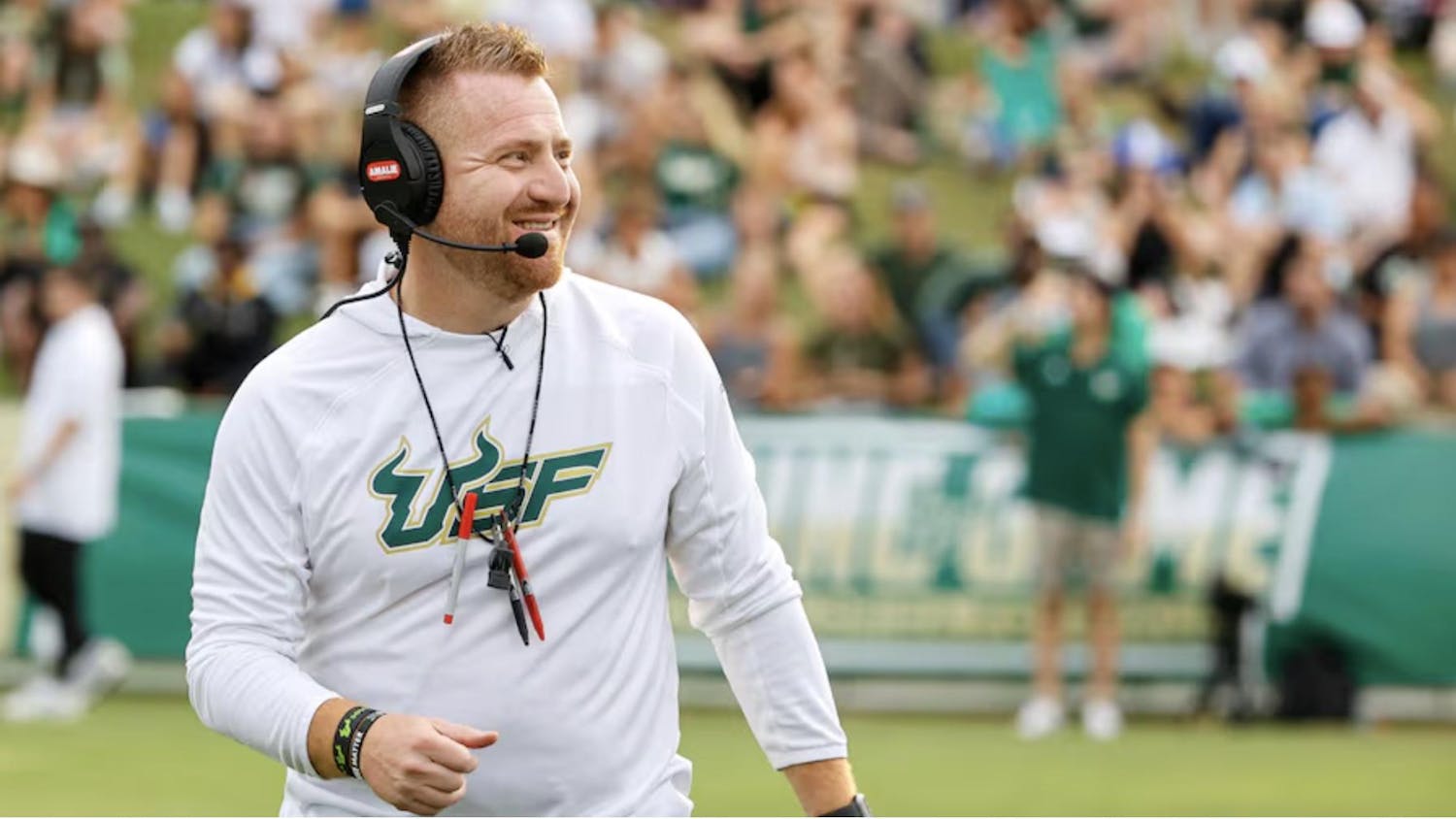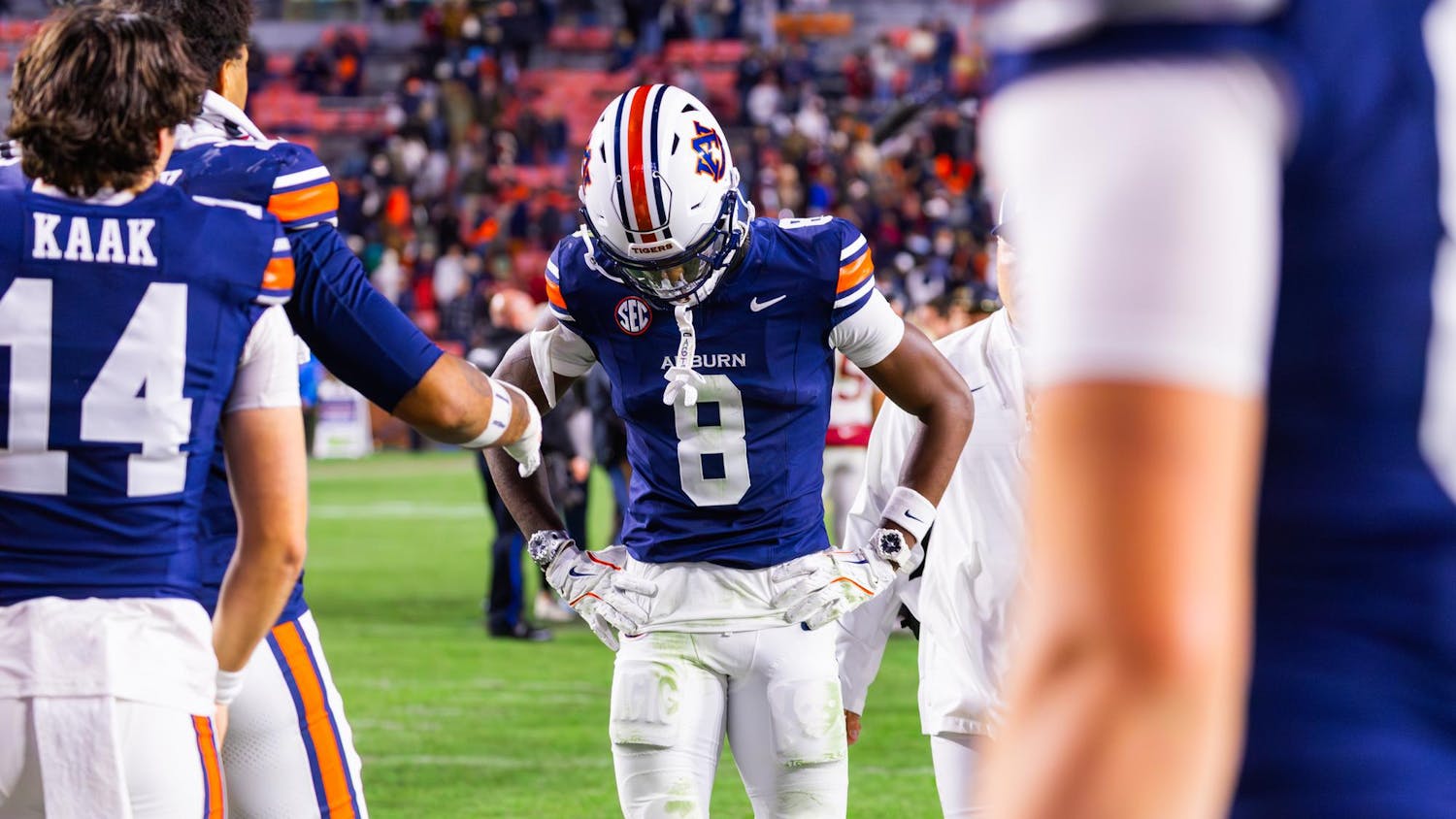With a massive boom in technology, the world of baseball has been changed forever – impacting fans, players and coaches alike while helping advance today’s game.
In the last 20 years, the advancement in baseball technology has opened a whole new world of possibilities for player development. In this era of modern baseball, every Major League Baseball (MLB) team has access to cutting-edge programs, like KinaTrax and TrackMan, but this wasn’t the reality for professional baseball teams 10 years ago.
“I think growing up, even watching Major League Baseball, it was kind of just like ‘Oh, that’s a good pitcher,’ but you never knew why,” said first-year pitcher Cam Tilly. “But I think that [these programs] can attract all the metrics, and you can kind of differentiate a pitcher: Why’s this guy better at this? Why is this guy’s curveball better than this guy’s slider?”
Auburn’s new pitching coach, Everett Teaford, played professionally with the Kansas City Royals (2011-13) and the Tampa Bay Rays (2014) and emphasized that he relied on his coach’s expertise to improve instead of in-game data.
“We had coaches that were older and had experience, but like as far as something that was unbiased data that wasn’t somebody’s eyes…we didn’t have any of that,” Teaford said. “So, it was really just a lot of trial and error and a long time to try something [new and get it] right.”
Along with the MLB, many college baseball programs have started adjusting to this technological age, taking full advantage of its benefits.
“When I played, we really had nothing,” Teaford said. “I was exposed to nothing until my last year when I was playing with the Tampa Bay Rays, and they were very far advanced. So, it’s very cool to see what the kids nowadays can get to help them be better baseball players and be more successful. It’s incredible how fast it’s moved.”
Earlier this year, Auburn baseball installed KinaTrax – a markerless motion capture technology that provides 3D imaging and biomechanical analysis – in partnership with the school of kinesiology. The KinaTrax system involves 16 high-speed cameras, eight on the batter and eight on the pitcher, that break down players' movements, providing loads of in-game data.
“One great thing about KinaTrax is it gives you a ton of information,” Teaford said. “One bad thing about KinaTrax is it gives you a ton of information, so figuring out what matters for that player…From there, (the kinesiology department) breaks it down into a remedial language for me so I can pass it on to the players..."
After using TrackMan for over 10 years, the Southeastern Conference (SEC) announced in March 2022 the expansion of its relationship with the software to improve the accuracy of officiating while helping pitchers refine their pitches. Along with over 120 schools and all 30 MLB teams, Auburn uses TrackMan in the bullpen to give pitchers a better visual of things like spin rate and ball release.
“All of our tech would start with TrackMan, and our bullpens have an edgertronic camera, which is a super slow-motion camera that can see ball release,” Teaford said. “When you start getting into the physics of how the ball spins and trying to create movement with the seams, that device – right there – is very, very helpful.”
Teaford explained the technology primarily helps enhance a player’s output.
“I would say the tech has really helped the ability to increase performance and be able to kind of role specific guys, like are you a starter, are you a reliever or do you need to pitch in this position?” Teaford said.
What it can’t do – not yet anyway – is prevent injuries, but the data can help coaches and biomechanists identify red flags in a pitcher’s mechanics to know their true workload. The ultimate goal is to help the pitching staff meet its true potential within a safe range.
“When you look at a lot of workload data and build-ups, I don’t think people truly know what keeping a pitcher healthy looks like,” Teaford said.
All the useful data these systems provide wouldn’t be actionable without experts like Auburn professor Gretchen Oliver and graduate assistant Adam Nebel, an Auburn doctoral student in kinesiology. Oliver and Nebel provide reports that address a pitcher’s data, allowing Teaford to present that information to his bullpen “in a digestible fashion.”
“The biggest thing we have going for us is the kinesiology department and Nebel and specifically Oliver because they’re very invested in wanting to help us,” Teaford said. “They’re both very smart people, and you can have this tech – and it’s great – but if you don’t have somebody to help make it actionable, then it’s really irrelevant.”
Teaford emphasized that it is a collective effort from the school of kinesiology and the coaching staff to utilize the technology to aid his players’ development.
“There are a lot of demands on coaches, whether it’s recruiting or compliance stuff, but if we didn’t have the great kinesiology department that we have here at Auburn, we wouldn’t be able to kind of make it all go in a better direction,” Teaford said.
Do you like this story? The Plainsman doesn't accept money from tuition or student fees, and we don't charge a subscription fee. But you can donate to support The Plainsman.
Caitlyn Griffin is a sophomore from Huntsville, Alabama, majoring in journalism. She started with The Plainsman in fall 2022.
Twitter: @caitlyngrif99





